Knowing how to fish tides in Louisiana enables anglers to consistently catch speckled trout and redfish.
Breton Sound Marina wasn't even open yet and he had already left the dock in the pitch black of night.
Glancing at his watch, the time was 4:43AM. The boat, a 15ft flatboat with a 50hp outboard, was slow and ungainly.
The young man hit the water early to beat the weekend crowd.
His desire to pursue speckled trout had to be satiated and taking the risk of running in the dark alone was worth it.
He did have an advantage though: a pair of PVS-14 night vision goggles and a lot of experience using them. Leaving the no-wake zone, he donned the goggles and got on plane.
It is July of 2009. Balmy summer air whipped over me as the two stroke screamed down the Spoil Canal.
The wind was flat calm and I knew today would be a great day to see tidelines wrapping around points. Any fish activity betrayed by a splash would be easily seen.
Turn after turn came and went as GnarTooth worked her way down the canal, avoiding underwater obstructions and shallow water.
The early morning night twilight started to glow, allowing me to see distant thunderheads flashing through the eerie green of the 14's.
Curious things they are, because they are so beautiful and grand, but spawn water spouts, blinding rain and devastating lightning. I was by myself and would have to play my cards safely to avoid getting stuck in one.
Despite this, the thing at the forefront of my mind was not thunderstorms, nor women, partying, cars or anything else most young men concern their time with. Rather, my mind was on speckled trout.
Those fish ran my life and today I was going to get a shot at them.
After what seemed like an eternity I finally reached the end of the Spoil Canal.
I took a left into the MRGO and rushed to a point trout had been caught the week before.
Like an addict looking to get his fix, I quickly anchored off the boat and started tossing a popping cork with a Berkley Gulp shrimp in New Penny.
And then I waited. I waited some more.
Nothing happened, so I waited a little longer. Finally, I caught a speckled trout!
I hurriedly put him away into the ice chest and cast back out. But instead of watching the cork go under I just watched it sit there.
I kept casting at the same spot, hoping for another strike...
How to Fish Tides in Louisiana
The rest of the day went on something like that, catching trout here and there.
I ended a long day with 18 speckled trout which, by Louisiana standards, is kind of a let down.
It really pained me because I had crushed the trout there before but without really knowing why.
I just figured I had found a "good spot".
If I had given it some thought (and eventually did) I would have realized that spot was no good to fish on a falling tide. When I caught fish before it was on a rising tide.
That fishing trip and others taught me a lot about tide and how water moves.
You are always told that you need moving water when fishing for speckled trout, but nobody really ever tells you why or what it looks like.
In this article I will answer those questions and clarify what is arguably the most important knowledge of the marsh to possess: mastery of the tide.
Why must we know how water moves through the marsh?
As mentioned in Feeling the Pulse of the Marsh, the waters of southeast Louisiana are a living, breathing thing that are subject to the flow and ebb of the tide.
This means that conditions are constantly changing therefore influencing an already temperamental species of fish: speckled trout.
Navigability
We must know how water moves through the marsh so we know where navigable water is.
Some places that were previously navigable may no longer be as a result of a low tide.
You don't want to get your boat stuck!
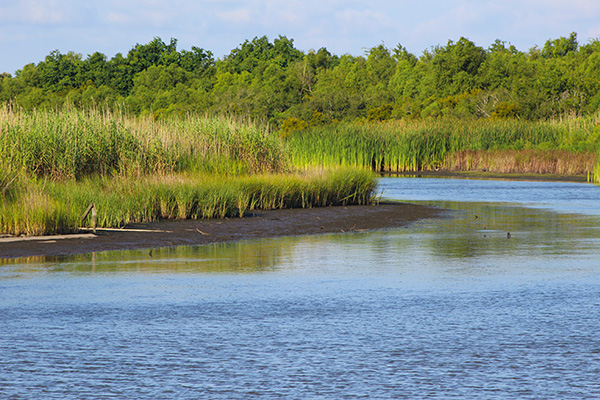
What if this were your favorite shoreline to fish for reds? Where will you go when this happens?
Clean Water
Of course, water levels can dictate how clean water may or may not be. When the water is low and is subject to hard winds, it can become dirty.
Dirty water is generally bad for fishing speckled trout and makes sighting for redfish very difficult.
The Right Tackle
You certainly don't want to show up to your first fishing spot only to discover the water is moving the opposite direction or is falling harder than what you have planned.
If your rods are rigged for a weak tide then you may have to spend time retying heavier tackle. That is time wasted on the water.
Dissolved Oxygen Levels
Sometimes water movement can dictate oxygen levels in an area. If the water ever gets really low and hot really fast, then you can count on there being a fish kill.
You will generally see crabbers pull their traps out of the area as well as a bunch of dead fish floating on the surface.
Secret Fishing Spots
Oyster beds are great to fish! Oysters are filter feeders and need plenty of water flowing around them to bring them their food.
This is why oyster fishermen place their leases in areas with tidelines flowing through them.
These leases are marked with PVC pipes, but that does not mean that all oyster beds are marked.
Some are less obvious because they are not marked, given they grew there naturally and without the aid of oyster cultch.
They are great to fish but you can only locate them if you know how the water moves through the marsh.
Become a Better Angler
Last, but not least, it is important to know how water moves through the marsh in order to give yourself options.
Water does not move uniformly across the marsh.
It is totally possible for the water to be higher on one side of the marsh than another.
If the water stops moving in one part of the marsh then you can run to another part and find moving water there.
This doesn't pertain to just water movement, but also water cleanliness and salinity.
Some parts of the marsh are just better protected than other parts.
What influences water movement?
You are probably thinking "tide" and that is not an incorrect answer, however it is an incomplete one.
Tide is certainly the most important player but it is not the only one. However, we will take a look at it first.
Effect of Tide on the Water
There are three different kinds of tides:
- diurnal
- semi-diurnal
- mixed semi-diurnal
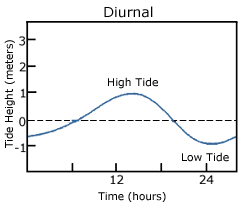
Photo courtesy of NOAA
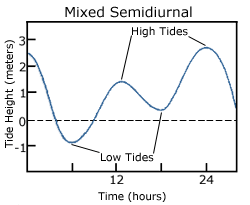
Photo courtesy of NOAA
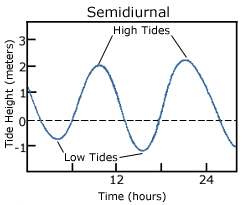
Photo courtesy of NOAA
The tide in Louisiana is special because it is a diurnal tide and rarely gets above two feet. In comparison to the rest of the world, our tide is a weak one and only goes up and down once in a lunar day.
A lunar day is slightly longer than a solar day, being 24 hours and 50 minutes.
A semi-diurnal tide comes and goes twice in a lunar day.
This causes for more water movement and is one of the reasons I believe we see larger trout in places like Texas and Florida where semi-diurnal tides abound.
Louisiana's soft once-a-day tide is one of the many reasons we have such an excellent breeding ground for inshore species.
It is important to note that a mixed semi-diurnal tide is a tide that takes place twice in a lunar day but has different lows and highs.
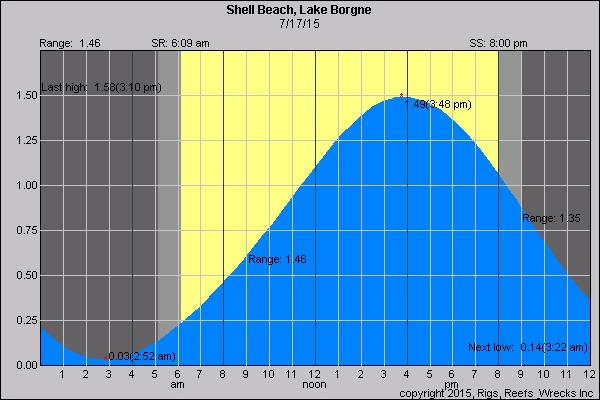
Typical tide in Louisiana. Note it is diurnal and a full 1.5' less than the Florida tide - Photo courtesy of RodnReel
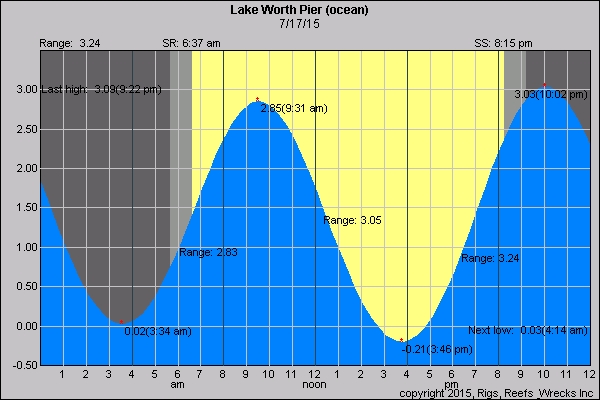
Typical Florida tide. It is much stronger than a Louisiana tide. This is why we find bigger trout in Florida - Photo courtesy of RodnReel
Effect of Wind on the Water
The wind greatly affects how water moves, blowing it into and out of the marsh.
It can work with the tide to move more water or work against it to cancel it out.
Generally speaking, a north and west wind in Louisiana will blow water out of the marsh, but a east and south wind will blow water into the marsh.
Winds out of the north and west are characteristic of winter time whereas winds out of the south and east are common during the summer, though there are always exceptions.
During the winter it is normal for the water to be low and in the summer the water is usually higher.
Understanding how wind from odd angles (like a northeast wind) affects water is best understood by gaining experience and watching wind and water level information like the Shell Beach Buoy (or whatever NOAA buoy is in your area).
A light 5 knot wind out of any direction won't have much of an impact but a 10-15 knot wind will! Consider these scenarios:
- 10-15 knot east wind + 1.5' rising tide
- 5-10 knot west wind + .75' rising tide
- 15-20 knot southeast wind + 2' falling tide
- 10-15 knot northwest wind + 2' falling tide
Which scenario do you think will flood the marsh? That's right, #1 will.
What scenario will leave the marsh devoid of water? Scenario #4 does.
In scenarios #2 and #3 the wind cancels out the tide or significantly slows it down.
It's clear to see how the wind is a very important player when it comes to influencing water movement.
Moving Water is Everything
Moving water is key, especially for trout.
Without a tideline to form bait and give them an idea as to where to ambush their prey, trout will sit tight and won't be "turned on."
While there are always exceptions it is generally known that you need moving water to catch fish.
To see what tidelines are and how to find them please refer to Scouting: Finding Tidelines.
How do you find moving water?
The answer to that question depends on the conditions at hand and is a long winded one.
It is essential to understand the bigger picture of how tide and wind work together to move water inside the marsh.
Making a decision based off a single condition can be fatal for a fishing trip. So let's look at tide behavior and fluid dynamics to see the bigger picture.
First off, the tide does not move the same everywhere at once.
It can be falling on one side of the marsh and rising on the other.
It is totally possible for the water to literally be higher and only 20 miles away be lower.
Knowing this can make you a rockstar of moving water!
It is feasible to start fishing on one side of the marsh and work your way to the other side and not see a slack tide until much later.
For example, look at the two tide charts below.
One is for Gardner Island on the Mississippi River Gulf Outlet (MRGO) and the other is for Shell Beach, near Campo's Marina.
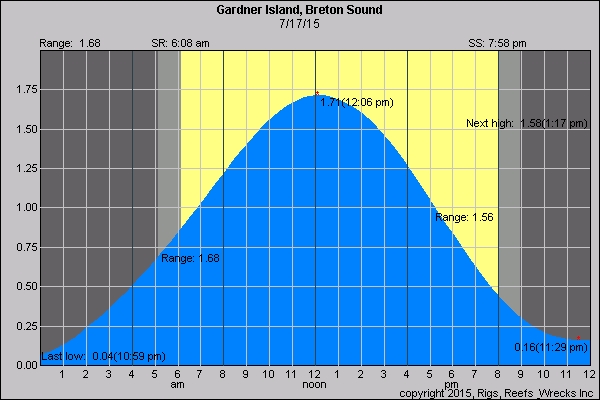
Note the Gardner Island tide is about 4 hours ahead of the Shell Beach tide. You can leverage this to your advantage.
You will see that the Gardner Island Tide Table is about four hours ahead of the Shell Beach tide table but both locations are only about 20 miles apart. It is smart to fish the MRGO before beating feet to Bayou St. Malo and catching the falling tide there as well.
This entire area stretching from Breton Sound to Lake Borgne is unique because the tide has to travel from Breton Sound to the Chandeleur Sound around the Biloxi Marsh to the Mississippi Sound and eventually Lake Borgne.
As you guessed, it takes about four hours. You may not have this uniqueness in your area, but you can certainly move with the tide and avoid slack water.
Now that you understand the tide is not the same across a general area we can begin to understand that not all water is moving uniformly in an immediate area.
We understand this by understanding fluid dynamics, or the study of how fluids move. There are two basic terms in fluid dynamics you need to know:
- Flow Velocity - how fast water moves
- Flow Capacity - how much water is moving
Water is a fluid and it does not compress well. Because of this only so much of it can move through an area at once.
When water is moving through a constricted area, like a bayou, it will move much faster than it would through a larger and less constricted area, like a large lagoon.
The bayou has more flow velocity than the lagoon, but less flow capacity.
On the flip side, the lagoon has more flow capacity (more water) than the bayou but significantly less flow velocity.
If the wind and tide are working together to create a strong water movement then the bayou might be "too fast" for a good fish bite.
You would move to the lagoon because the water is not moving too fast there. You can try drifting the lagoon or fishing the mouth of the bayou towards the end of the tideline.
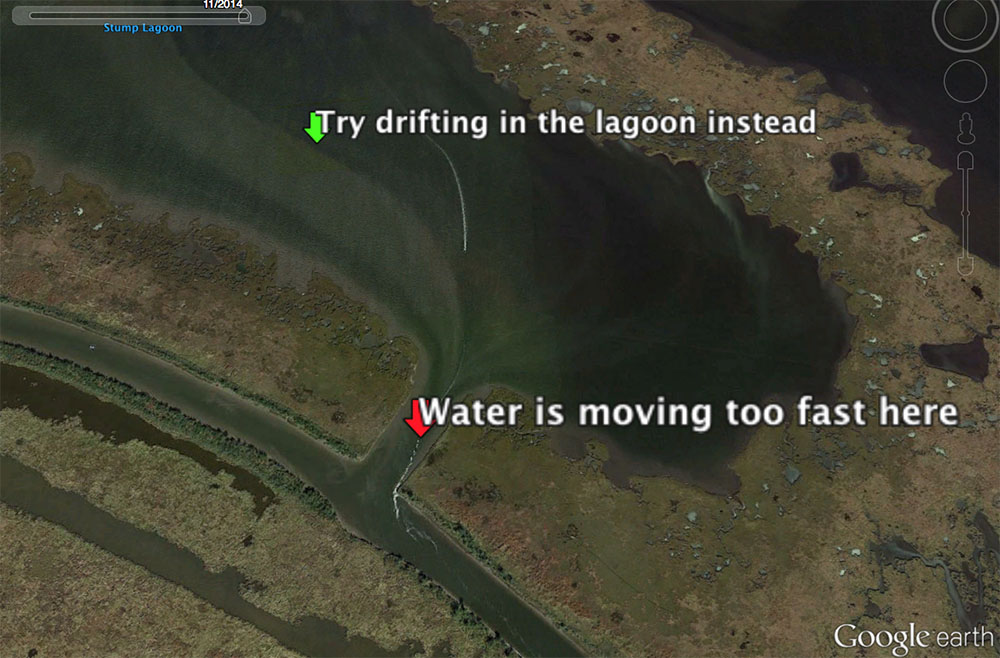
Note the water is moving too fast at the mouth of this lagoon. You want to get away from that fast water and find something trout will like in the middle of the lagoon.
Conversely, if the water movement is really weak you can relocate to a constricted body of water like the bayou mentioned above. With experience you will learn that some parts of the marsh always have some kind of moving water.
That experience comes strictly from manning up and hitting the marsh like it owes you money.
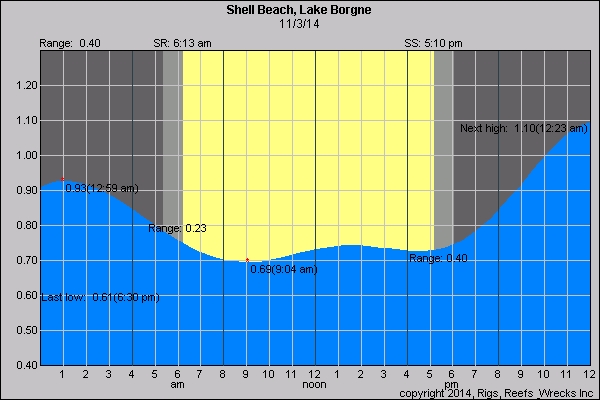
This is a neap tide. Fishing it is every inshore angler's nightmare.
The most difficult scenario to find moving water is during a neap tide. A neap tide has virtually zero tidal movement and occurs when the sun and moon are at a right angle to the Earth, effectively canceling their gravitational pull on the water.
It is difficult to fish when the water is barely moving, but there are several things you can do when a neap tide comes.
First off, you can pray for wind.
If there is any kind of wind to move that water then you are a lucky angler! A wind blown point is going to be your best bet. Just look at the picture below.
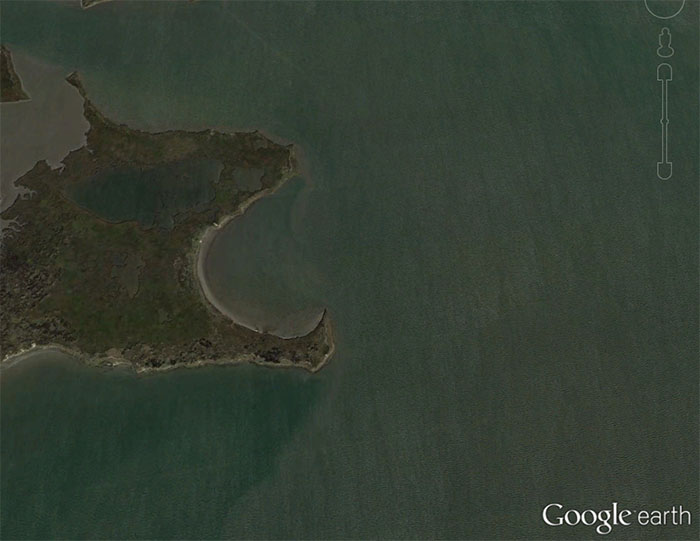
Finding a point like this one with wind blowing across it is key when fishing a neap tide.
The wind will blow water across this point, creating a tideline that fish may be biting at. It is worth trying! If the wind is blowing hard it could create enough water movement to fish your normal spots as if it were a rising or falling tide.
Aside from that, you can make the best use of prominent points and junctions of water to find moving water. Some spots like the end of the MRGO Rocks will have some moving water before other spots do.
Conclusion
I reflect on those days I spent in the marsh.
Learning how to fish tides in Louisiana has improved my inshore fishing trips. It's fun to find new spots based on the conditions, rather than going to the same ol' spot on every trip.
P.S.
Did you find what you learned here to be useful? Consider joining my newsletter to be notified when more like it publishes.
